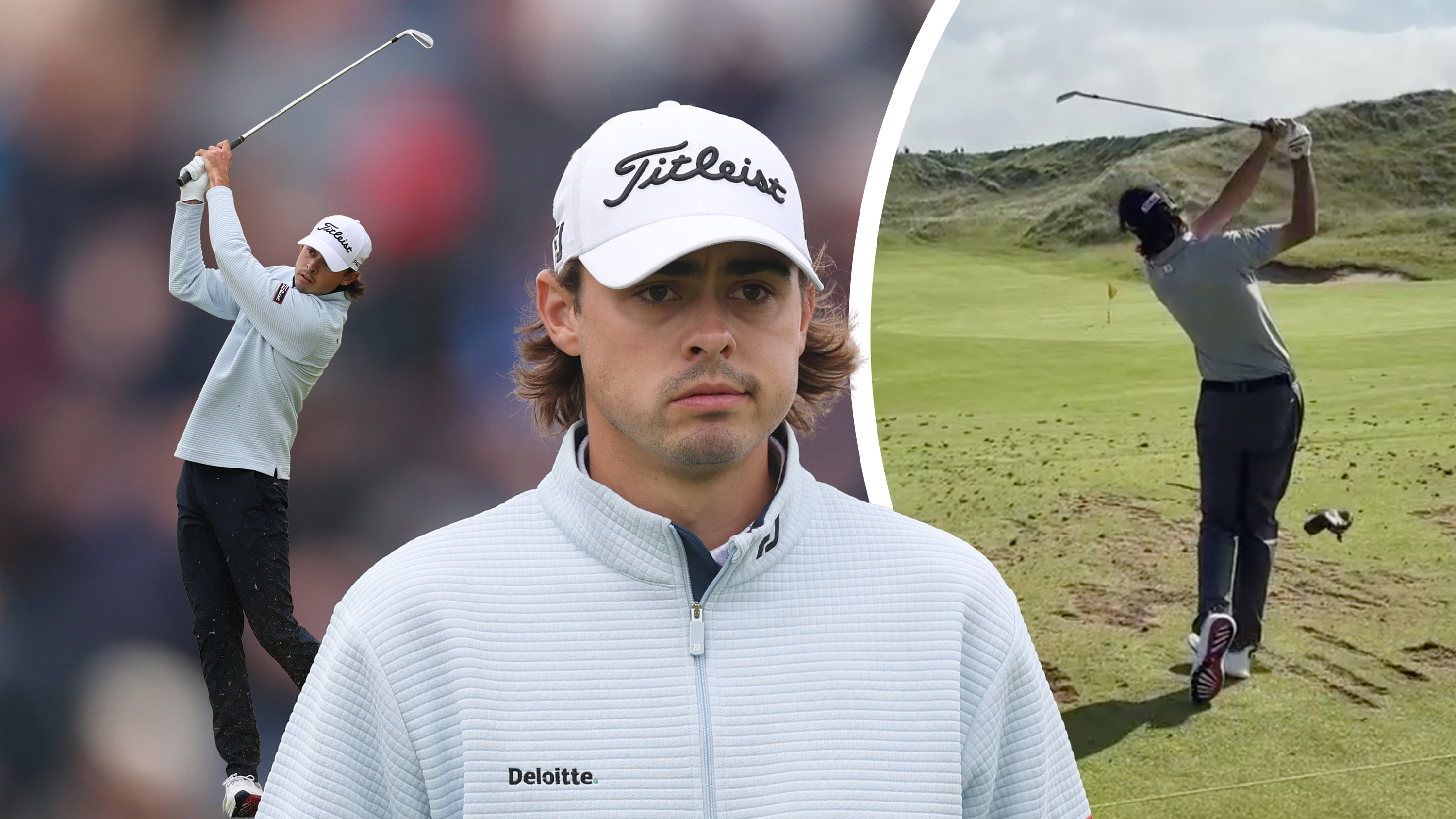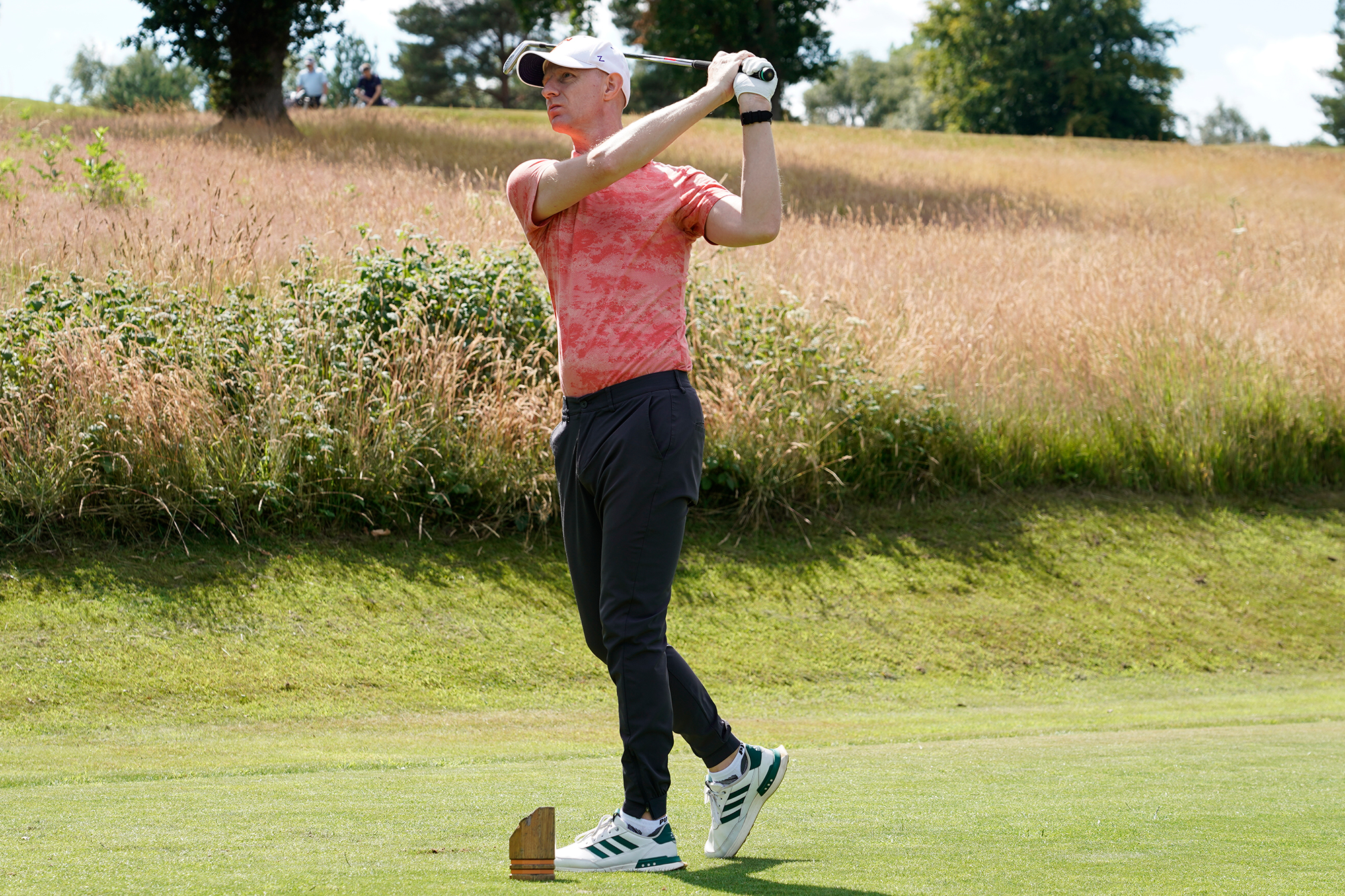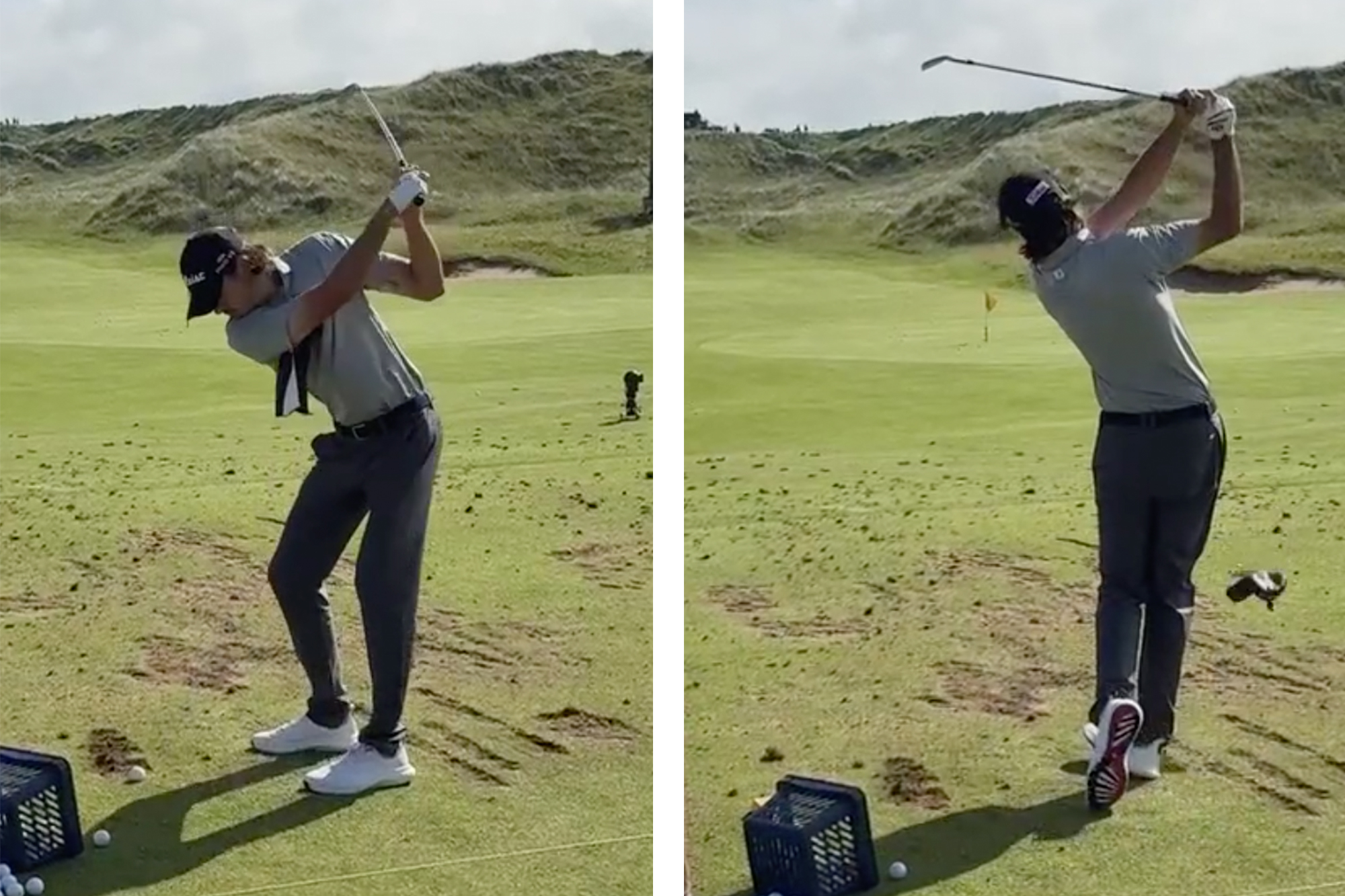Early Leader Jacob Skov Olesen Used This Drill On The Range At Royal Portrush... It Could Transform Your Ball Striking
Jacob Skov Olesen stormed into an early lead at Royal Portrush, but we saw him using an interesting drill on the range which could help your golf game...


Ged Walters
Being on the ground at an Open Championship is a privilege that we never take for granted, especially when we get the opportunity to get up close to the action on the driving range.
This week at Royal Portrush, we have seen plenty of the best players in the world go through their preparations for the 153rd Open Championship, but it was a young Danish prodigy that caught our eye when practicing ahead of the tournament.
Jacob Skov Olesen propelled himself into an early lead at the Open Championship with an impressive 67, but as you can see in the video below, he utilised a very interesting drill to prepare for his second Major start.
In order to find out what he was doing, I reached out to Golf Monthly Top 50 Coach Ged Walters and asked him to explain it for us, including how you can try it for yourself...
Golf Swing Connection Drill Used By Open Championship Leader

Using different styles, teaching aids, technology and games to measure improvements, Ged is keen to make the learning process educational and fun. He's worked with a number of top local, national and international instructors, including Adrian Fryer and Jeff Ritter, one of the most prominent golf instructors in America.
In the video below, you can see Jacob Skov Olesen using a head cover drill to work on connection in the golf swing.
This is often used by golfers when the arms become disconnected from the body in the golf swing, which is a common amateur swing fault.
The drill is very simple to carry out, requiring minimal setup or equipment and is something any amateur golfer could do in their driving range session.
Subscribe to the Golf Monthly newsletter to stay up to date with all the latest tour news, equipment news, reviews, head-to-heads and buyer’s guides from our team of experienced experts.
Start by taking your normal setup position, then place a head cover under your lead armpit. If you don't have a head cover to hand, you could use a golf glove, a towel or even a sock.
Jacob Skov Olesen perfecting his swing on the range earlier this week prior to his 67 to start the 2025 Open 🏌️♂️ pic.twitter.com/bMJ5AT8NhTJuly 17, 2025
In terms of pressure, you want to be around nine out of ten. As you start the backswing, ensure the lead arm stays connected to your chest - trapping that head cover and preventing it from falling to the ground.
The head cover should remain in place all the way through the downswing and through impact, only releasing and falling to the ground as you reach the finish position at the end of your golf swing.

This drill could help you with any connection issues in your golf swing, and it's so simple to try on the range
You could start with a few half speed swings to get used to the feeling, before ramping up to full speed - but this drill can be effective with any club throughout your bag from wedges to driver.
It is essential to maintain connection throughout the golf swing, which will help you to improve your ball striking, but a lack of connection will generally lead to inconsistent strikes and erratic scoring.
What Are The Best Golf Drills For Amateurs?
Our guide to the 10 best golf drills is a great place to start if you are struggling with your golf game, as it covers common faults that occur from tee to green and offers actionable solutions to help you play your best stuff.
One of my personal favourites is the ball striking drill - as it provides instant feedback. Spray a little dry shampoo on the face of your golf club, then take your normal setup and hit one down the range.
Pause before hitting again, and take a closer look at your club face. There should now be a mark on the face identifying the strike location, giving you some handy information about what you need to work on next - like how to stop toe strikes or fix a shank.

Baz joined Golf Monthly in January 2024, and now leads the instruction section across all platforms - including print and digital. Working closely with Golf Monthly's Top 50 Coaches, he aims to curate and share useful tips on every aspect of the game - helping amateurs of all abilities to play better golf. Baz also contributes weekly to the features section, sharing his thoughts on the game we love and the topics that matter most. A member at Sand Moor Golf Club in Leeds, he looks forward to getting out on the course at least once a week in the pursuit of a respectable handicap.
Baz is currently playing:
Driver: Benross Delta XT
3-Wood: Benross Delta XT
Hybrid: TaylorMade Stealth 4 Hybrid
Irons: Benross Delta XT 5-PW
Wedges: TaylorMade RAC 60, Callaway Jaws MD5 54
Putter: TaylorMade Spider Tour
- Ged Walters Top 50 Coach
You must confirm your public display name before commenting
Please logout and then login again, you will then be prompted to enter your display name.